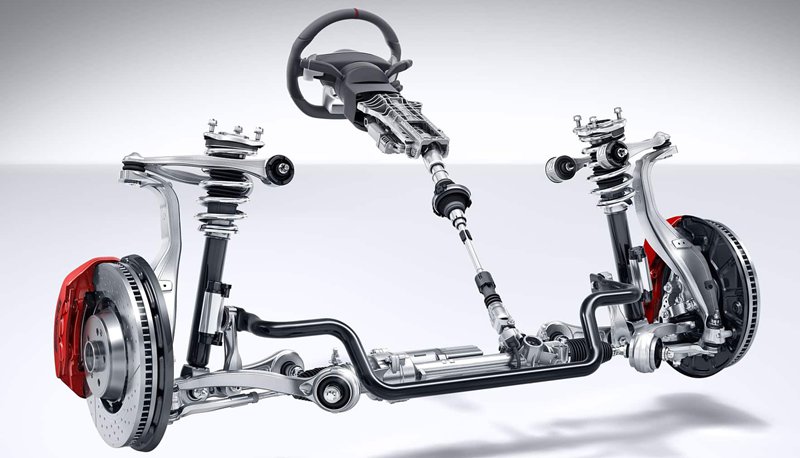
When you turn your car’s steering wheel, it feels simple and natural. But behind that smooth motion lies an intricate system designed to translate small movements of your hands into precise turns of your vehicle’s wheels. Without a properly functioning steering system, driving would be unsafe and nearly impossible.
Let’s take a deep dive into how steering systems work, the components involved, and why regular maintenance is crucial for safe and efficient driving.
The steering system connects the driver’s input at the steering wheel to the movement of the tires. Its primary purpose is to:
At its core, the steering system is about converting rotation into linear motion—your turning of the steering wheel becomes the tires turning left or right.
The steering wheel is the part you interact with directly. Its size, grip, and design are engineered for comfort and control.
This connects the steering wheel to the steering gear. Modern steering columns often include safety features, such as collapsible designs that absorb energy during a crash.
The steering gear is the heart of the system. It translates the rotational motion of the steering wheel into linear motion for the wheels.
Tie rods transfer motion from the rack or gearbox to the steering knuckles, which directly turn the wheels.
These attach to the wheel hubs and enable the tires to pivot when you steer.
In hydraulic systems, this pump provides the pressure needed to reduce the physical effort required to turn the wheel.
Many modern vehicles use EPS, which replaces hydraulic pumps with electric motors for smoother, more efficient steering.
Older vehicles often used manual steering systems. Drivers had to apply significant effort, particularly at low speeds or when parking.
Hydraulic fluid under pressure assists in turning the wheels, making steering easier. While effective, these systems can be less fuel-efficient due to the constant pump operation.
EPS uses an electric motor for assistance. It’s more energy-efficient, provides variable assistance (lighter at low speeds, firmer at high speeds), and integrates well with modern safety features like lane-keeping assist.
Even the best steering system can develop issues over time. Look out for these symptoms:
Ignoring these warning signs can lead to unsafe driving conditions.
Keeping your steering system in good condition doesn’t just protect your safety—it also saves money in the long run. Here are some tips:
Steering technology is evolving quickly. Many new vehicles feature steer-by-wire systems, which eliminate the mechanical link between the steering wheel and the tires. Instead, sensors and actuators electronically control wheel direction.
Benefits include:
As cars become smarter, steering systems will continue to play a vital role in both driver control and autonomous driving features.
The steering system may seem simple from the driver’s seat, but behind every smooth turn is a sophisticated network of gears, rods, and technology working in harmony. From the steering wheel to the tires, each component plays a vital role in keeping your vehicle safe, stable, and responsive.
By understanding how your steering system works and paying attention to maintenance, you ensure better performance, longer vehicle life, and, most importantly, safer driving.
Next time you take a smooth turn or easily park in a tight spot, you’ll know the hidden mechanics at work—proof that steering systems truly are one of the unsung heroes of automotive engineering.
1. What’s the difference between hydraulic and electronic power steering?
Hydraulic systems use fluid pressure to assist steering, while EPS relies on electric motors. EPS is more efficient and common in modern vehicles.
2. How often should I check my steering system?
During every routine service or at least twice a year. Regular inspections help catch wear and tear early.
3. Why does my steering wheel vibrate at high speeds?
This is usually caused by misaligned wheels, unbalanced tires, or worn steering components.
4. Can I drive with a bad steering rack?
It’s dangerous. A failing steering rack can cause unpredictable handling and should be replaced immediately.
5. Do all modern cars use electronic power steering?
Most newer vehicles do, but some larger trucks and performance vehicles may still use hydraulic or hybrid systems.